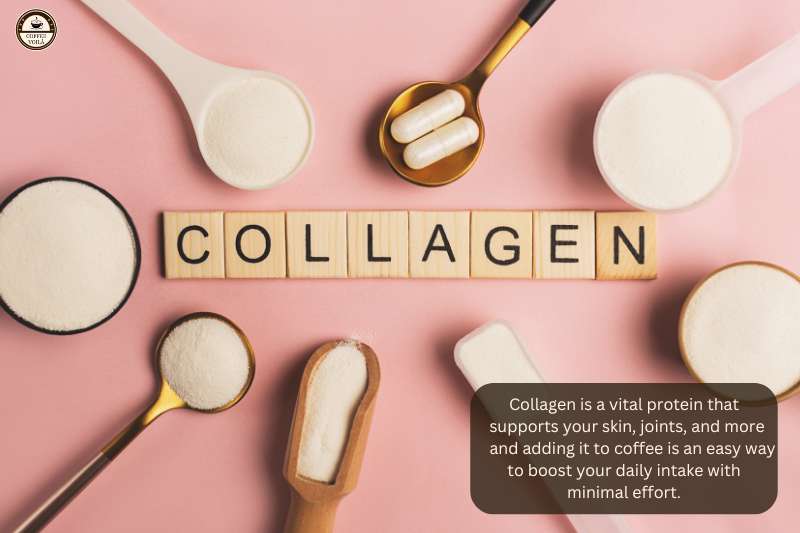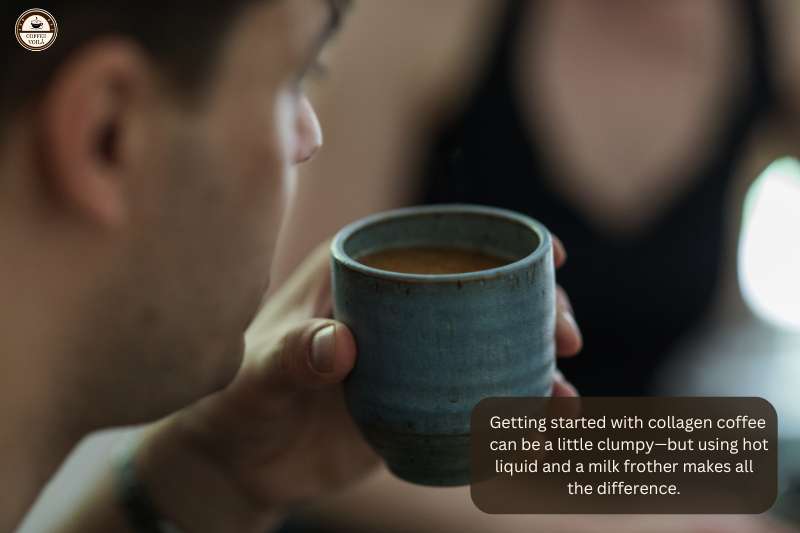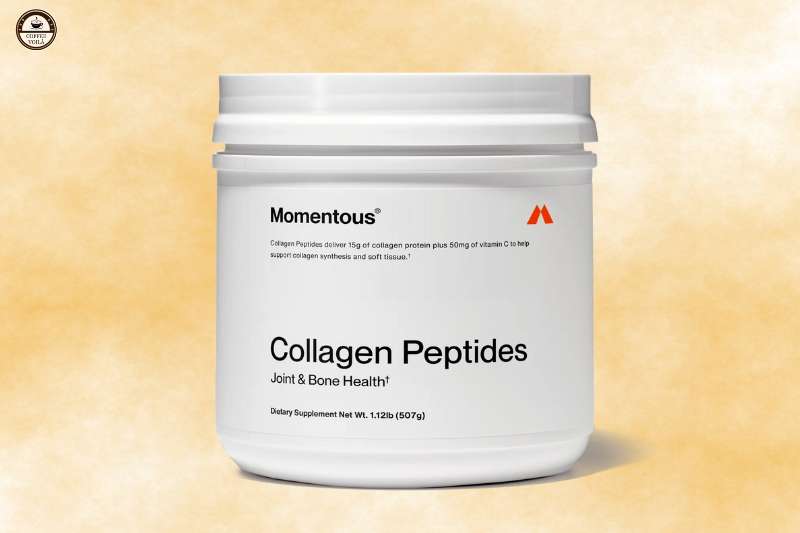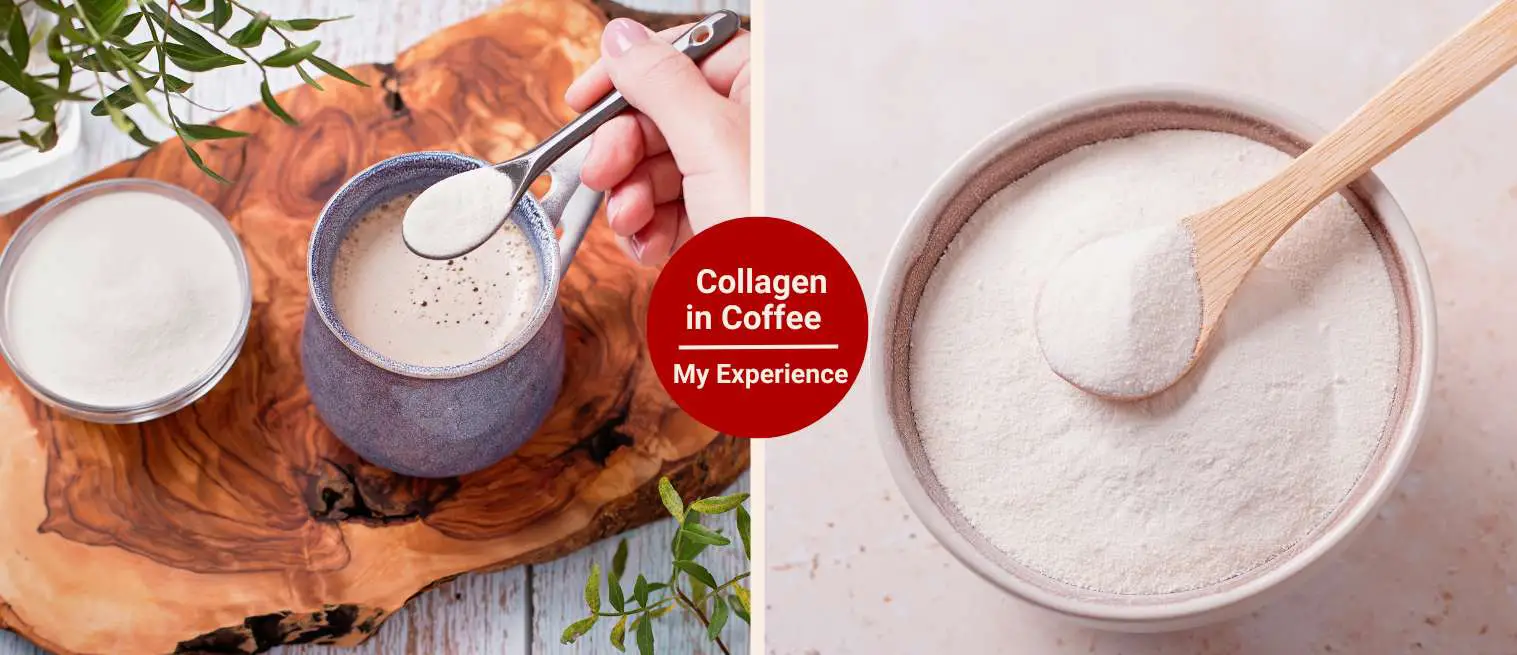Why I Started Adding Collagen to Coffee (My Experience)
Did you know that collagen is the most abundant protein in the human body, making up about 30% of its total protein content?
Basically, it’s the glue that holds everything together, such as your skin, joints, bones, and even your gut lining.
A few years back, I started looking for ways to manage an old knee injury from my boxing days. The pain wasn’t unbearable, but it was nagging, especially on colder mornings or after leg training in the gym.
That’s when I stumbled upon the idea of adding collagen to coffee. I figured, hey, I already drink coffee every day. So, I might as well sneak in something good for my joints, right?
What started as an experiment soon became a ritual. I even began adding it to milkshakes before workouts. Over time, I noticed subtle changes—not just in my knee, but in my skin, nails, and even digestion.
In this guide, I’m sharing my experience with collagen in coffee, including what worked, what didn’t, the brands I liked, and tips for those curious about trying it for themselves. So let’s start brewing!
Quick Takeaways:
- Collagen coffee is an easy habit to support skin, joints, and nails. A scoop in your morning brew can provide long-term wellness benefits with minimal effort.
- Consistency matters more than immediate results. You likely won’t see changes overnight. But subtle improvements (like stronger nails or less joint stiffness) can build up over weeks.
- Choose the right collagen for your goals. Types I and III are great for skin and nails, while Type II supports joints. You should look for hydrolyzed peptides because they dissolve better and absorb faster.
- It’s not a cure-all, but it can help. While it didn’t magically erase all issues, it noticeably improved your skin’s glow, reduced joint pain, and softened skin wrinkles.
What Is Collagen and Why Add It to Coffee?
Collagen is a type of protein your body naturally makes, and it’s basically the glue that holds you together. I’m talking skin, bones, joints, tendons, ligaments, muscles, and you name it.
Over time, our collagen production begins to decline (around your mid-to-late twenties, a fun fact), which can lead to wrinkles, joint stiffness, and a general feeling of “meh.”

There are three main types you’ll see in supplements:
- Type I is the superstar for skin, bones, and tendons. Think smooth skin and strong nails.
- Type II is all about joint health—it’s what makes your cartilage work like it should.
- Type III supports things like blood vessels, organs, and muscles. It also works alongside type I for firm and elastic skin.
Most collagen powders (like hydrolyzed peptides) are easy to mix into hot drinks, which brings us to… coffee.
Commonly Claimed Benefits
- Improves skin hydration and elasticity (hello, glow)
- Supports joint health and flexibility
- May strengthen hair and nails
- Promotes gut health and digestion
- Helps with post-workout recovery
- Contributes to muscle mass when combined with resistance trainin
And when I’m not feeling like coffee?
I’ll throw a scoop into a milkshake with almond milk, banana, and a little cinnamon. I use the blender to mix everything well and I get like a pre-workout shake that’s gentler than espresso.
Other alternatives: Adding it to smoothies or even golden milk also works.
Notes: If you’re looking for an easy way to support your skin or joints (or feel good), collagen in coffee might be your new best friend.
What Happened When I Started Adding Collagen to My Coffee?
I’ll be real, I didn’t expect much. It sounded like one of those trendy wellness things that Instagram influencers love and real people never notice any actual results from.
But after hearing about collagen coffee from a podcast, I figured: “Okay, what’s the worst that can happen? I waste a scoop of powder in my espresso?”
So I ordered a tub online, started adding to my coffee and here’s what happen:
Week 1 – Getting Used to the Texture
The first cup? Uh… not amazing. I didn’t stir it properly and ended up with these odd floaty bits halfway through the mug.
For that reason, now I always mix collagen powder into hot liquid and use a milk frother if you’ve got one.

I was using Vital Proteins unflavored collagen peptides because it had decent reviews and no weird additives. Once I figured out the right method, things worked better.
So, I scoop first, pour coffee slowly, then stir like you mean it. And good news: the taste was nearly non-existent, which helped a lot because I was still suspicious.
Week 2–4 – Subtle Changes and Skepticism
Somewhere around week two, I started to notice my skin looked… perkier? Nothing dramatic, but my usual dry patches around the nose were less of a thing.

I also felt like I wasn’t bloating as much after breakfast. That said, I couldn’t tell if it was the collagen or one of those random good weeks where your body behaves. I kept telling myself: “Could be a placebo, could be working.” Either way, I stuck with it.
Month 2 and Beyond – Real Benefits?
By the time I hit the second month, I had enough “little wins” to convince me something was shifting. My nails, which normally chip if I look at them funny, were stronger.
Like, I was cutting them instead of waiting for them to break. My joints especially my knees also stopped making those weird creaky sounds when I got up off the floor.

I’ve got an old knee injury from my boxing days, and while it didn’t magically heal overnight, I swear the dull ache started fading. Some mornings it felt almost… normal, like I hadn’t messed it up years ago.
And skin? Yeah, there was definitely more glow. Not “I found the fountain of youth” kind of glow, but enough that a friend commented on it.
Even some of the fine lines around my eyes. Those stubborn little wrinkles looked a bit softer. I won’t lie, collagen didn’t solve all my problems.
But it quietly made several things better over time, and that was enough to keep it in my daily routine.
Pros & Cons of Collagen Coffee
If you’re considering giving collagen coffee a go, here’s what I’ve found: the good, the bad and what you’ll want to know before scooping it into your mug.
| Pros | Cons |
|---|---|
| Easy to add to your existing coffee routine | Results aren’t immediate—takes weeks to notice changes |
| Supports skin, hair, nails, and joint health | May clump if not mixed well (use a frother or blender for best texture) |
| Tasteless when using high-quality unflavored collagen peptides | Some blends include sweeteners or flavors that alter your coffee’s taste |
| Can improve digestion and reduce bloating | Not suitable for people with allergies to protein supplements |
| Boosts protein intake with minimal effort | Quality collagen powders can be pricey |
| Can be added to other drinks like smoothies, milkshakes, or golden milk | Some people may not notice any effects (especially if inconsistent) |
| Great for active lifestyles or aging bodies | May interact with certain medications—consult your doctor first |
Tips for Adding Collagen to Your Coffee
If you’re getting started with collagen coffee, there’s a right (and wrong) way to do it. So, these tips hopefully they’ll help you:
1 – Use a Frother or Blender for a Smooth Mix
My first try, I stirred collagen into my coffee with a spoon… and yeah, it was a lumpy mess.
Once I started using a milk frother, the texture was silky smooth with zero clumps. If you have a blender, that works too, especially if you like your coffee with milk or want to turn it into a frothy latte-style drink.
2 – Choose Hydrolyzed Collagen Peptides (They Dissolve Better)
I recommend looking for hydrolyzed or “collagen peptides” on the label. These have been broken down into smaller amino acids. For this reason, your body can absorb them more easily and they mix better in hot liquids.
3 – Start with 1 Scoop per Day and Monitor Effects
I started with just one scoop (usually about 10g), and gave it a few weeks. Also, keep track of little changes. For instance, your skin, digestion, energy, whatever you’re hoping to improve.
The reason is that collagen works quietly, so give it time and see how your body responds before adding more.
4 – Avoid Overly Sweetened Collagen Blends
Some brands add stevia, monk fruit, or even artificial flavors. I’m not a fanand they can mess with the flavor of your coffee and taste a bit… off.
I suggest sticking with unflavored collagen peptides because you have more control. If you want sweetness, it’s way better to add your own. Perhaps, adding a dash of maple syrup or a little vanilla extract.
What Collagen Brands Should You Try?
If you’re starting with collagen coffee or smoothies, these three brands are solid picks that don’t feel like a waste of money. Each has its advantages depending on what you’re looking for. So here’s a quick breakdown:
Vital Proteins Collagen Peptides (Best Overall)
This is the one I keep going back to. It contains collagen types I and III, plus vitamin C and hyaluronic acid, which have helped my skin over time.
The powder is mostly flavorless. However, if you mix it with water, you might get a slight gelatin-like taste (I didn’t love that).

But in coffee or smoothies? Smooth sailing. It blends easily and gives a nice protein boost about 20g of collagen and 18g of protein per serving. I also used it in oatmeal and yogurt on busy mornings, and it held up well.
Sports Research Collagen Peptides Vanilla (Best Flavored Option)
If you want something with flavor, this vanilla version from Sports Research is awesome. I’m picky about anything “flavored vanilla” (it often tastes fake).

However, this one was like dessert-lite, mainly in coffee or blended with frozen banana and almond milk. Each scoop has 11g of collagen, and it’s non-GMO, IGEN certified, and Informed Choice Certified, which means no shady stuff. It’s sweetened with monk fruit, not sugar, which kept it from being overly sweet.
Momentous Collagen Peptides (Best for Joint Support)
This one’s for the gym-goers or anyone who wakes up with joints that snap, crackle, and pop. It contains types I, II, and III collagen.
Plus, something called FORTIGEL, which is designed to specifically aid in joint repair. I noticed fewer knee aches after a few weeks of daily use.

It’s unflavored and NSF Certified for Sport, so athletes can use it worry-free.
Heads-up: it doesn’t dissolve as well in cold drinks. For this reason, use a frother or mix it into room-temp liquid first.
Notes: You have tons of collagen supplements out there. But these three gave me the best mix of taste, results, and no weird additives.
Last Thoughts: Is Collagen Coffee Right for You?
At the end of the day, collagen coffee isn’t some magic elixir. But it can be a helpful addition if you’re trying to support your skin, joints, or overall wellness.
From my experience (and a lot of trial and error with different brands), it’s best suited for people who are active, aging gracefully, or simply into beauty and skincare routines.
If you’re already drinking coffee daily, slipping in a scoop of collagen peptides is a low-effort way to boost your protein and give your body a little extra support.
That said, collagen supplements aren’t for everyone. If you’re sensitive to protein powders, watching your budget, or simply don’t like disrupting your coffee ritual, it might not be worth it.
And of course, always chat with your doctor before starting any new supplement, especially if you have health conditions or take medications.
Have you tried collagen in your coffee? I’d love to hear how it went: good, bad, or somewhere in between. Go below and drop a comment or question!







